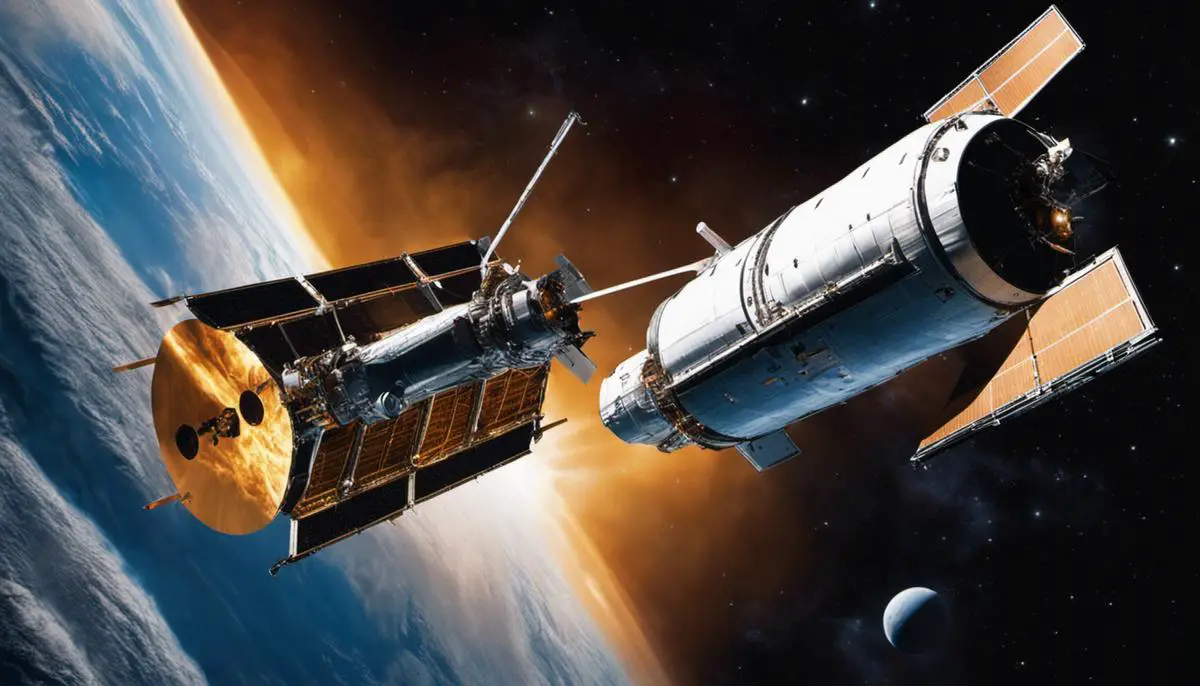Gazing up at the night sky often ignites a sense of awe and wonder in the pursuit of understanding the enigmatic universe and our place within it. Essential to this quest of discovery is the Hubble Space Telescope, a miracle of engineering and technological sophistication that has transformed our understanding of the cosmos over the last several decades. In the ensuing passages, we journey back to the origins and meticulous development of the Hubble, delve into its highly advanced technical configuration and functionality, highlight the stunning astronomical discoveries facilitated by this space-based observatory, and contemplate the future trajectory of this monumental tool of exploration.
Origin and Development of the Hubble Space Telescope
The Hubble Space Telescope, a pioneering marvel in astrophysics, has etched its marks on the tectonic plates of human understanding of the universe. This instrument of astronomical observation was named in honor of the esteemed American astronomer Edwin Hubble and launched into low Earth orbit in April 1990. Since its inception and entry into service, Hubble has delivered a constant stream of awe-inspiring discoveries and revolutionary insights upending our perception of the cosmos. Essentially, Hubble serves as humanity’s eye into the far reaches of the universe, probing the depths of galaxies, nebulae, and extra-solar realms.
Marshalling its sophisticated technology, Hubble shattered the epochal limits that constrained ground-based telescopes, heralding a new era of observational astrophysics. Earth’s enveloping atmosphere absorbs and distorts light, obscuring celestial objects. Hubble’s positioning beyond that interference allows for unparalleled image clarity. Not only has this been vital in adding detail to images of known bodies, but has prised open doors to the discovery of objects previously hidden by atmospheric distortion.
Hubble has amassed an extensive repertoire of mind-boggling accomplishments, invariably underpinning its historical significance. It reddened our understanding of the age of the Universe, honing estimated figures down to a mere 13.7 billion years. It substantiated existence of dark energy, a nebulous, contested concept, postulating an accelerated expansion of the Universe. Hubble thrust critical light on theories of galaxy evolution, exposing cosmic evolution processes on a grand scale by unveiling the Hubble Deep Field. The primordial sighting of exoplanets outside our solar system was yet another badge in its decorated accolades.
Reflecting on its developmental journey, Hubble represents a significant achievement in international collaboration and the fortitude of human spirit. Constructed by NASA’s Goddard Space Flight Center, it was transported into orbit by Space Shuttle Discovery, yet it is the European Space Agency’s contributions that should not go unnoticed. They provided solar cells, Faint Object Camera, and monetary investment for the noble endeavor. The inception of Hubble faced considerable turbulence. A flaw in its primary mirror initially resulted in blurry images. Nevertheless, the 1993 Service Mission 1 allowed astronauts to install adaptive optics with corrective lenses and essentially “fix” Hubble’s defective eyesight.
Since this initial hiccup, Hubble has undergone subsequent repairs and upgrades, five service missions in total, each extending its life and expanding its capabilities. The latest of these missions in 2009 introduced the Wide Field Camera 3, significantly enhancing Hubble’s viewing range across the electromagnetic spectrum.
To comprehend the full magnitude of Hubble’s contributions, it’s crucial to understand that its images are not only breathtaking but also carry profound scientific significance. Those striking splash of colors and glowing light signify various chemical elements, a visual feast that is simultaneously a scientific treasure trove, adding depth and detail to the cosmic narrative meticulously constructed by generations of astronomers.
Hence, the historical significance and developmental journey of Hubble Space Telescope stands as an exemplar of human tenacity, colluding creativity and thirst for knowledge. It remains a beacon of intellectual exploration, igniting the imagination of all humankind with a fascination for celestial wonders and every iota of its colossal achievement elucidates humanity’s ceaseless quest to decode the mysteries of the boundless universe.
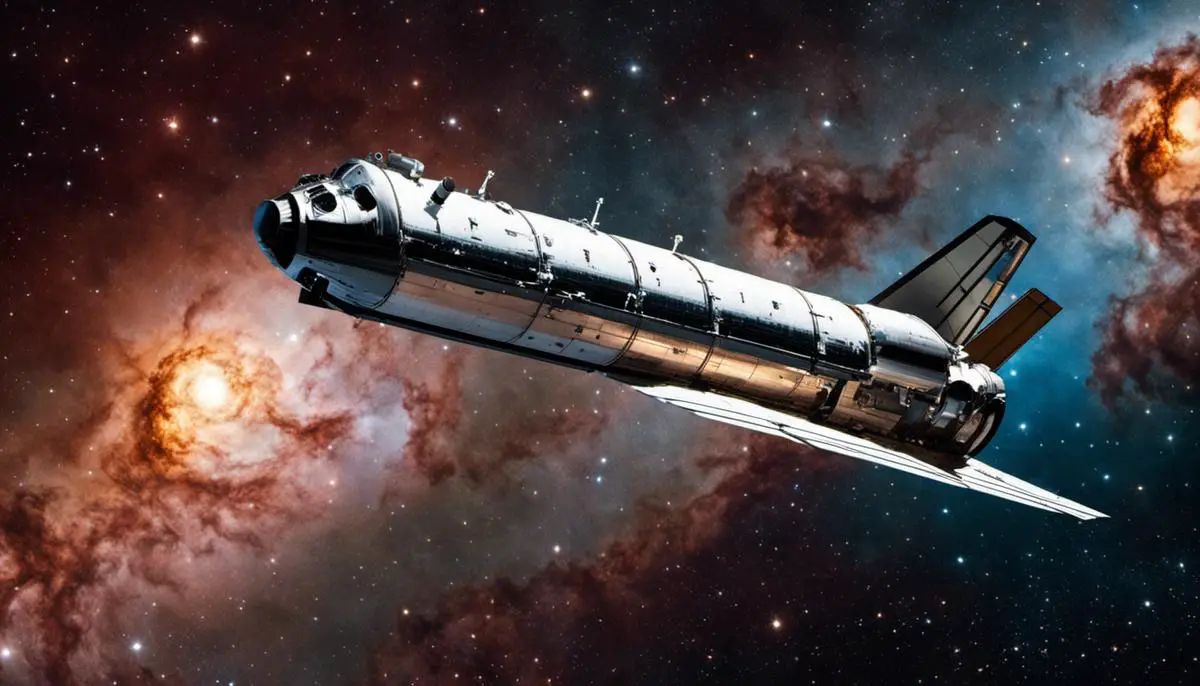
Technical Aspects and Features of the Hubble Space Telescope
An exploration into the unique technical aspects and notable characteristics of the Hubble Space Telescope that transcend well beyond its Low Earth Orbit positioning and its instrumental role in scientific discoveries demands meticulous inspection of its aesthetic as much as its functional design. Guided by gravity and not limited by Earthly directives, Hubble’s distinctive physical structure and unparalleled mechanics differentiate it from numerous other telescopes, terrestrial or otherwise.
Fundamentally, Hubble is an embodiment of extensive knowledge, encased in a structure stretching 43.5 feet (13.2 meters) in length, approximately the size of a school bus, with a diameter of 14 feet (4.2 meters). This vast expanse holds its unique attributes, such as its optical telescope unit and an array of other equipment that broadens its capabilities. However, this expansiveness does not weigh it down; by terrestrial measurements, the telescope weighs about 24,500 pounds (11,110 kilograms), yet, due to being in space, weight is an irrelevant factor.
Among Hubble’s primary distinguishing innovations is its Optical Telescope Unit (OTU), a Ritchey-Chretien Cassegrain design. Comprising of two hyperbolic mirrors – the primary mirror with a diameter of 94.5 inches (2.4 meters) and secondary mirror of 12.2 inches (0.3 meters) – the configuration is significant in minimizing spherical and coma aberrations, yielding cleaner and focused images. The genius of Fine Guidance Sensors in maintaining a stable pointing system further enhances the intricacy of its functioning.
What complements the images obtained from the OTU is a suite of advanced scientific instruments brimming with technologies from photometers and spectrometers to cameras operating across a spectrum of wavelengths. Notably, Hubble’s Wide Field Camera 3, an infrared and visible light camera, and its Advanced Camera for Surveys are part of the telescope’s ‘eyes’ that have played a part in capturing the crisp and clear iconic images that the Hubble is celebrated for.
The cutting-edge technology and design, though remarkable, would be ineffective without an adequate supporting system – a role fulfilled by the spacecraft systems. This component controls the pointing, coordinates the observations, maintains the temperature, and enables communication with the Earth. A high-gain antenna system aids transmissions while the solar array provides the power, making the complex functioning of the Hubble possible.
Moreover, the telescope’s ability to pivot in any direction, providing an unobstructed view of astronomical objects, often for considerable periods, amplifies the precision of the observational data. This uninterrupted broad-window opportunity overlooking the universe is not hampered by day-night cycles or atmospheric interference, an advantage not afforded by terrestrial counterparts.
Equally profound is Hubble’s lifetime and the capacity for necessary repairs and instrumentation upgrades via manned service missions, a feature not found in isolated space-based observatories. This adaptability has enabled Hubble to witness technologies’ evolution over decades and remain an adept tool for space studies.
The key technical elements and vital features that the Hubble Space Telescope incorporates serve as a testament to human ingenuity and the progressive evolution of observational astronomy. By transcending the limits of terrestrial observatories, the distinctive characteristics of the Hubble Space Telescope have redefined our understanding of the cosmos.
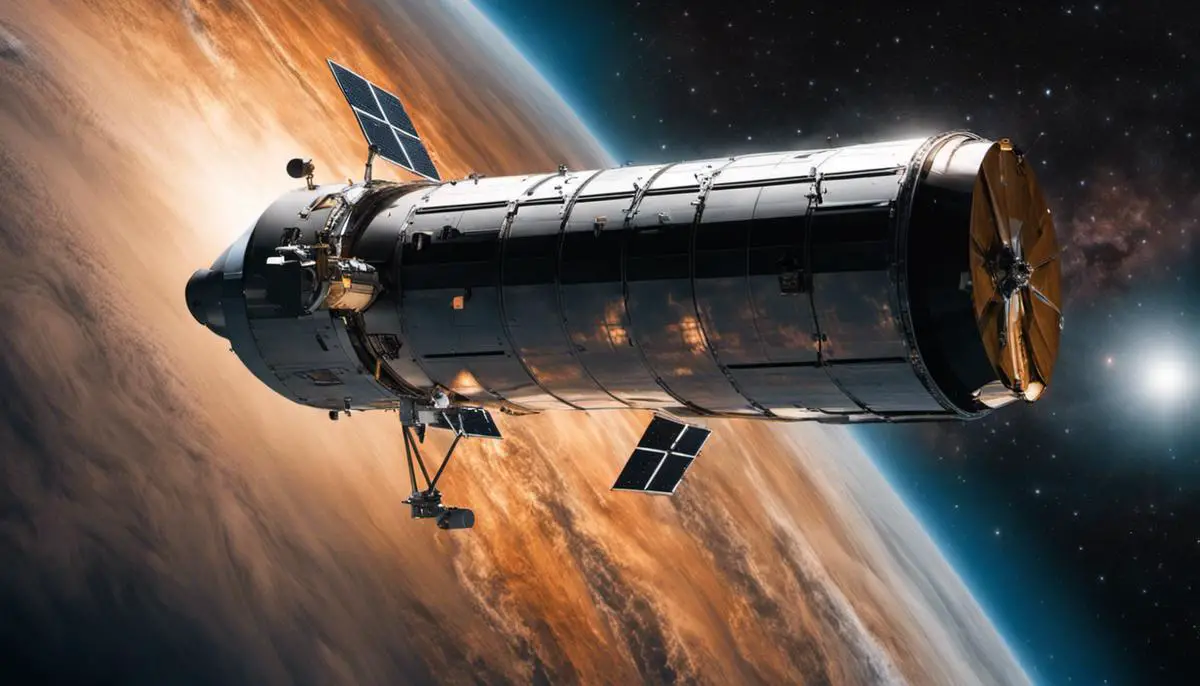
Astronomical Discoveries Made Through the Hubble Space Telescope
Advancing the narrative further, exploration of the Hubble Space Telescope’s architecture, encapsulating both physical structure and intricate mechanics, yields insight into the power of this ground-breaking gentleman among telescopes. Our Hubble, not dissimilar to an inquisitive scholar, is scaled, sculpted, and scrupulously crafted to investigate the deep depths of the universe.
Moving ahead to the Optical Telescope Unit (OTU), an instrument of unparalleled optical lucidity, one cannot help but marvel at its revolutionary design. This innovative creation features two mirrors. The keenly carved primary mirror, majestic in its dimensions, gathers incident light from astronomical subjects, and the secondary mirror returns this in a manner precisely coaxial with the primary mirror, with didactic implications for interpreting the captured light. Their stealthy operation catalyzes the capturing of accurate, high-resolution images.
Even further enhancing its capabilities are Hubble’s advanced scientific instruments. The Wide Field and Planetary Camera enables sharp focus on extremely distant objects. Its optical, infrared, and ultraviolet mechanisms work synergistically, delivering multifaceted data across varying energy spectra. The Spectral Imaging Array allows for the spectral analysis of celestial bodies, enabling researchers to unearth a panoply of dimensions, like temperature, composition, and velocity.
The supporting spacecraft systems exemplify the adage, ‘teamwork makes the dream work’. Driven by solar panels, the Power Control Unit conducts the rhythm of life onboard Hubble, distributing power, participating in thermal control, and directing attitude control, promoting the continuous capture of awe-inspiring observations.
A pivotal capability of the Hubble Space Telescope includes its ability to rotate and adjust its point of focus with remarkable precision. It possesses an almost uninterrupted view of astronomical objects. Its gyroscope suite works in harmony to keep Hubble steadily observing its targeted subject—in effect, an unwavering gaze set on the cosmos.
Endowed with an impressive lifespan, Hubble is well-equipped for repairs and upgrades. Its modularity allows for on-orbit service, demonstrated by several successful repair and upgrade missions conducted by NASA astronauts. This intrinsic flexibility ensures Hubble stays au courant with advancements in astronomical instrumentation.
In conclusion, it is unquestionable that Hubble’s physical and technical prowess has been monumentally instrumental in elevating observational astronomy. The repercussions of its unerring diligence are immense, firmly ensconced in stargazers’ hearts worldwide, and inscribed in the annals of scientific history.
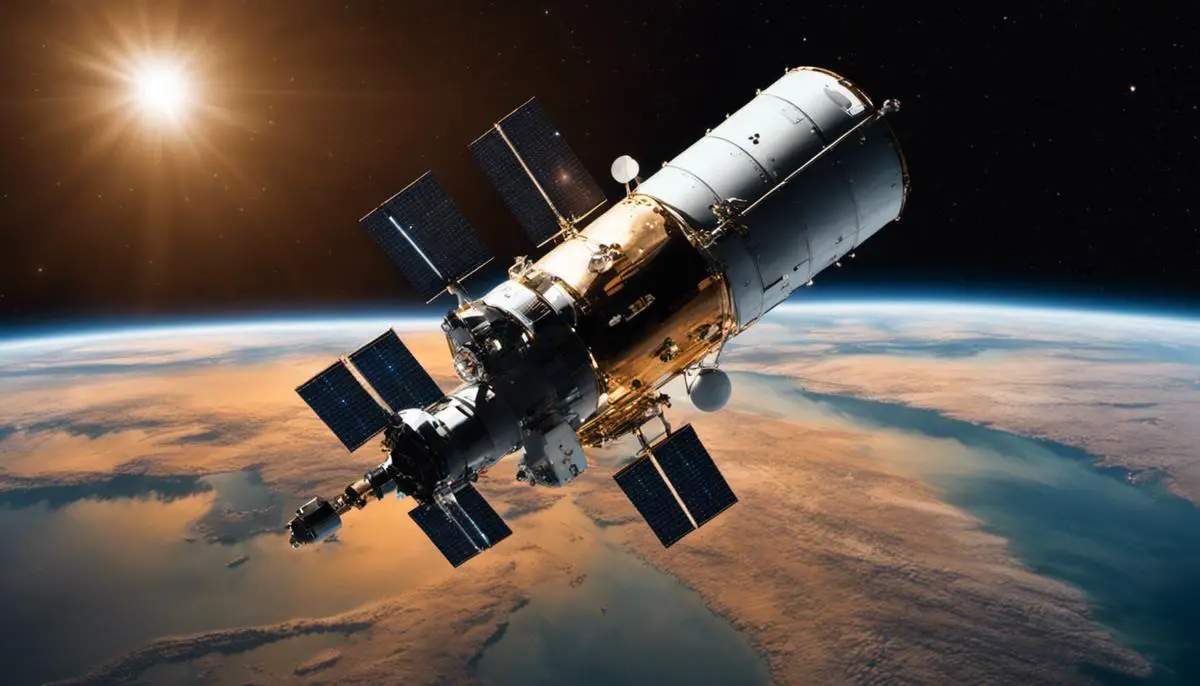
The Future of the Hubble Space Telescope
The future of the Hubble Space Telescope is ripe with potential for continuing its commanding influence in astronomical research. While the exact timetable for Hubble’s active operational lifespan remains uncertain, its substantial contributions to the field of astronomy show no signs of ceasing even as the march towards new astronomical apparatuses accelerates. The impending launch of the James Webb Space Telescope (JWST), with its superior infrared capabilities and substantial primary mirror size, does not signal redundancy for Hubble but presents an opportunity for complementarity. The JWST’s strengths in infrared observation opens the potential for tandem operations, with Hubble’s capabilities in the ultraviolet and visible light spectrum serving as an ideal partner.
A significant aspect to consider while deliberating on Hubble’s future is the reliance upon ongoing maintenance. Given that the last service mission was conducted in 2009, it stands to reason that Hubble’s advanced scientific instruments, despite their current operational capability, may necessitate future care. However, with the retirement of NASA’s space shuttle fleet, conventional in-person servicing missions are currently off the table. Innovative solutions, leveraging advancements in robotics, are being explored for potential intervention to prolong Hubble’s lifespan.
The Hubble Space Telescope, over its operational life, has become a stout lighthouse within the ocean of discovery, serving to guide the scientific community towards unraveling the mysteries of our cosmos. The treasure trove of data it has accumulated holds enduring relevance for future examinations. Legacy data, reprocessed with advancing technologies, could potentially unravel unprecedented insights into the nature of dark matter, cosmological inflation, and extragalactic astrophysics.
As newer telescopes, ground-based and space-based, join the astronomical observation arena, laying the groundwork for the era of multi-messenger astronomy, Hubble’s legacy will continue to inform the design, instrumentation, and operation of these new apparatuses. The engaging narrative of its successful operations, overcome challenges, and stunning imagery will no doubt continue to inspire future generations of astronomers, scientists, and space enthusiasts.
The Hubble Space Telescope, thereby, stands not only as a milestone in the journey of scientific discovery but also as a monument to human curiosity and relentless endeavor for knowledge. As we look forward to the dawn of new astronomical tools, Hubble remains a beacon, reminding us of our progress and the grandeur of the universe that awaits our understanding.
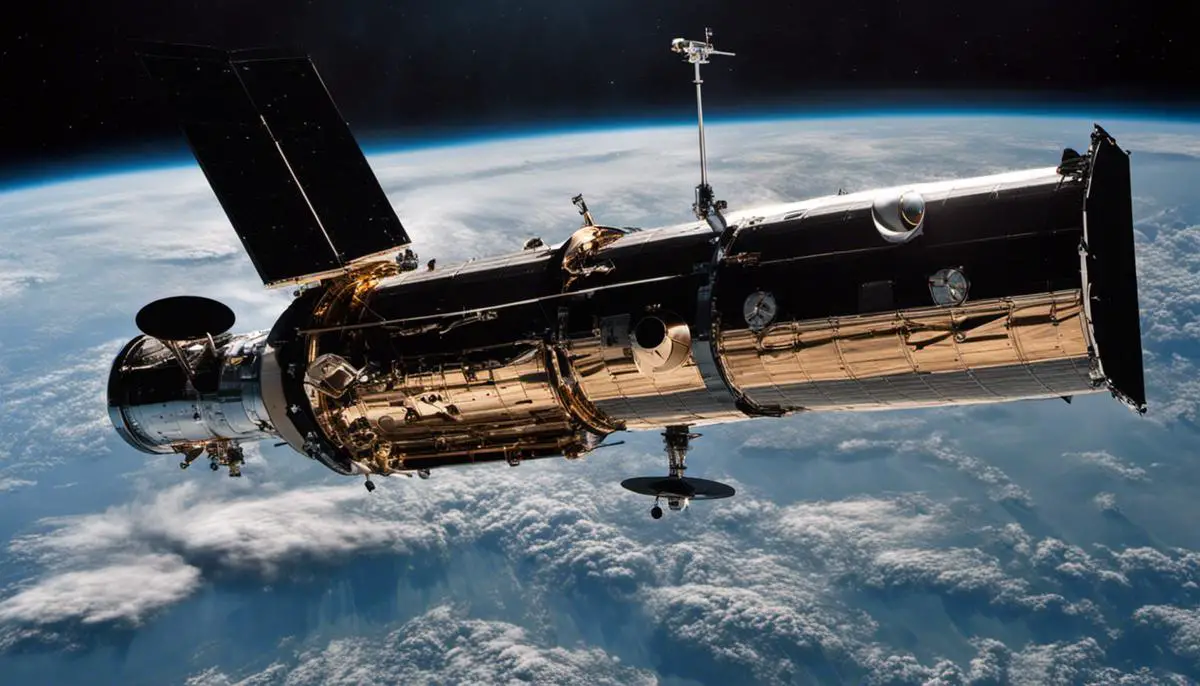
The Hubble Space Telescope is not merely a wonder of modern science and technology; it’s a portal through which we can embark on the grandest tour of the cosmos. As we voyage through space and time, Hubble continues to offer invaluable insights and unravel tantalizing mysteries, propelling not just our knowledge but also our imagination. From its inception to its astounding discoveries and the exciting prospects of its future, the Hubble’s journey symbolizes humanity’s unquenchable thirst for exploring the unknown. As we continue to speculate about the grandeur of the universe, the Hubble Space Telescope stands as a testament to the incredible possibilities of human innovation and our never-ending pursuit of knowledge.
![]()
